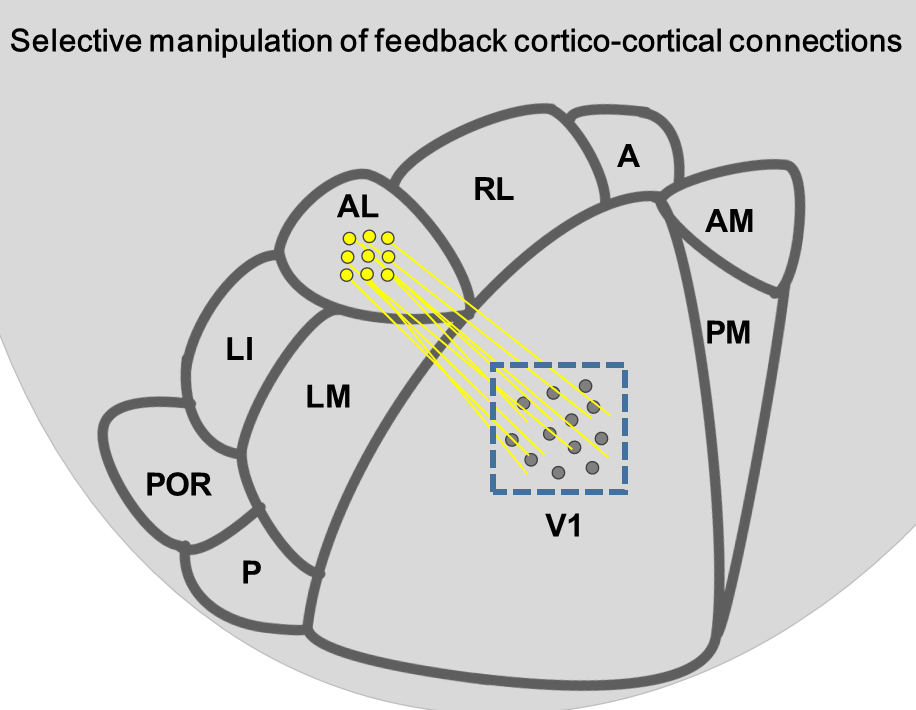Fumitaka Osakada (Nagoya University)

“Layer-specific roles of feedback cortico-cortical connections”
The processing of visual information is initiated in rod and cone photoreceptors when photoreceptors capture photons, convert them into electrical signals, and stimulate multiple neural circuits in the retina. The lateral geniculate nucleus (LGN) is the primary relay center for visual information received from the retina. Neurons of the LGN send their axons to the primary visual cortex V1, which extracts the relevant information from this reduced signal and further elaborates and integrates the information into a unified and coherent perceptual experience. The V1 sends its output to a hierarchical series of extrastriate visual areas, which represent a variety of higher order visual features, including motion, depth perception, image segmentation and object recognition.
Hierarchical relationships between visual cortical areas are defined by anatomical rules. Connections from V1 terminate most densely in layer 4 of higher visual areas. Termination of connections in layer 4 is a hallmark of feedforward cortico-cortical connections. In contrast, feedback connections from higher visual areas terminate predominantly outside of layer 4. Information flow in this hierarchical network is not unidirectional. However, the functional details of the feedback system remain largely unknown. In particular, layer-specific roles of feedback connections are totally unknown.
For more than a century, animal studies of visual system structure and function relied primarily on cats and non-human primates, such as macaques. Recent lines of evidence, however, have demonstrated that most basic properties of visual function, though not all, are present in the mouse. Mice and monkeys complement each other due to their different advantages and limitations. By interfacing with genetic and viral tools, optical imaging and optogenetics/pharmacogenetics, the mouse visual system provides unprecedented opportunities to address fundamental questions regarding visual processing and circuit computations.
The major goal of the proposed research is (1) to establish viral and genetic techniques combined with 2-photon imaging and optogenetics/pharmacogenetics for monitoring and manipulating neural activity of specific cell types of a particular layer in a given cortical area, and (2) to understand the functional role of feedback cortico-cortical connections in visual information processing.
Recent Publications
1. Osakada F, Callaway EM. Design and generation of recombinant rabies virus vectors. Nature Protoc. 8: 1583-1601 (2013)
2. Osakada F, Mori T, Cetin AH, Marshel JH, Virgen B, Callaway EM. New rabies virus variants for monitoring and manipulating activity and gene expression in defined neural circuits. Neuron. 71: 617-631 (2011)
3. Osakada F, Ikeda H, Sasai Y, Takahashi M. Stepwise differentiation of pluripotent stem cells into retinal cells. Nature Protoc. 4: 811-824 (2009)
4. Osakada F, Ikeda H, Mandai M, Wataya T, Watanabe K, Yoshimura N, Akaike A, Sasai Y, Takahashi M. Toward the generation of rod and cone photoreceptors from mouse, monkey and human embryonic stem cells. Nature Biotechnol. 26: 215-352 (2008)
Posted:2016/03/10

